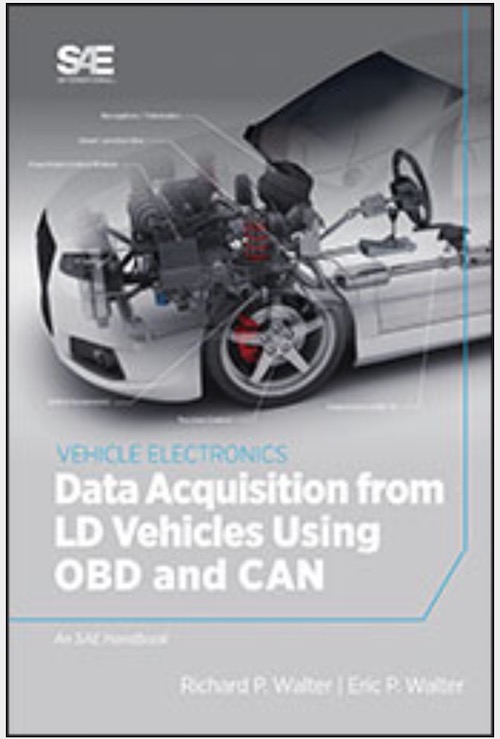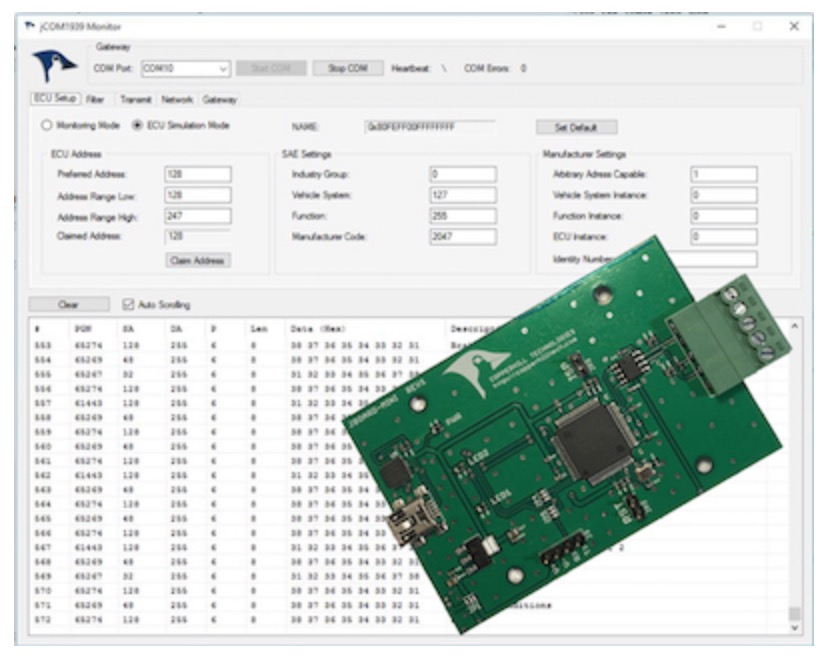Recent Posts
Data Acquisition from Light-Duty Vehicles Using CAN Bus, Including OBD-II, SAE J1939 Protocols
Posted by on
The Society of Automotive Engineers (SAE) has published a book that guides readers on how to collect and evaluate data from CAN Bus in-vehicle networks of light-duty (LD) vehicles.
Data Acquisition from LD Vehicles Using OBD and CAN by Eric Walter and Richard Walter addresses product engineers, service technicians, fleet managers, and all interested in acquiring data efficiently from SAE J1939-equipped vehicles.
Modern vehicles are equipped with an increasing number of electronic control units (ECU) to manage various subsystems such as the engine, brakes, steering, air conditioning, and infotainment. These ECUs are networked to share information. The in-vehicle network provides data for enhanced maintenance, fleet management, warranty, as well as legal issues, reliability, and accident reconstruction.
Topics featured in this book include calculated fuel economy, duty cycle analysis, and capturing intermittent faults. The authors provide a roadmap for the data acquisition user. They also explain the CAN Bus protocol plus a review of all 19 parts of the SAE International J1939 standard family.
The reader will learn how to determine what data is available on the vehicle’s network, acquire messages and convert them to scaled engineering parameters, apply more than 25 applicable standards, and understand 15 important test modes. Topics featured in this book include:
- Calculated fuel economy
- Duty cycle analysis
- Capturing intermittent faults
SAE J1939 ECU Simulator Board With USB Port
The jCOM.J1939.USB gateway board is a high-performance, low-latency vehicle network adapter for SAE J1939 applications. It allows any host device with a USB COM port to monitor SAE J1939 data traffic and communicate with the SAE J1939 vehicle network.
The board supports the full SAE J1939 protocol according to J1939/81 Network Management (Address Claiming) and J1939/21 Transport Protocol (TP). It is also supported by an extensive programming interface for Windows and Linux/Ubuntu applications, including full C/C++/C# source code for short time-to-market developments.
The strength of the board lies in the fact that the entire SAE J1939 protocol, including all timing requirements, is stored on-chip, thus taking the burden off the main system. The board uses a USB COM port to communicate with the main system, i.e. all data transfer is handled through a standard COM port access.
The communication protocol between the board and the main system is well documented and thus allows a porting to any computer system with a USB connection. Working source code libraries exist for Windows (C# under Visual Studio 2012/2013), Linux and its derivatives (C++ using Code::Blocks), and Raspberry Pi (C using the standard gcc compiler).
 Loading... Please wait...
Loading... Please wait...


